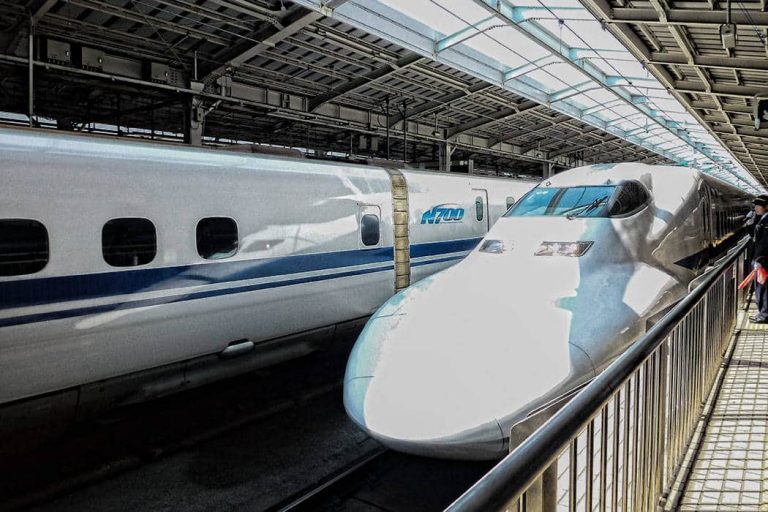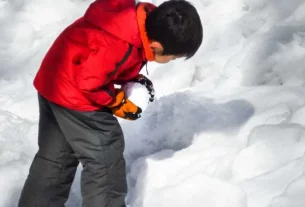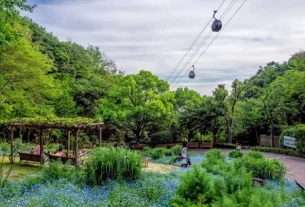If you have heard about the massive Japan Rail Pass price increase happening in 2023 you are probably trying to work out how that will affect you and your trip. We break it down here and will include all the updates as they come through.
We are big fans of the Japan rail pass having purchased it frequently since 2010 but we are also vocal advocates for doing your own assessment of whether it is good value for your trip or not. It’s not for everyone and with this change, many more people will be in the category of it not being a good option for them.
Currently with the Japan Rail Pass if you make a return trip from Tokyo to Kyoto within the 7-day window, with one or two local train rides in between, then the pass has paid for itself. After the price increase, you could travel from Tokyo all the way to Fukuoka and back in a week and the pass would not be economical. Eleven hours on the bullet train, past Kyoto, Kobe, and Hiroshima across to the island of Kyushu and back to Tokyo and still it will be cheaper to use individual tickets than the pass.

If you are travelling before the price increase this information doesn’t impact you and we would suggest instead that you read our detailed guide to decide if the Japan Rail Pass is good value for you. That article has all the information relevant to your trip.
The official announcement on the JR Group website is in shown here in Japanese.
Table of Contents
When does the Japan Rail Pass price increase?
Japan Rail has announced that the price increase will happen in October 2023, the exact date has not been confirmed.
A small window of opportunity in late 2023
You have 90 days from the purchase date to activate and use the pass in Japan. It is not clear yet whether there will be a small window of opportunity to purchase the pass before the October increase date for use in November or December. It is suggested that this will happen as the activation date of a pass is not fixed when you buy it. This will also require fewer system changes for Japan Rail and be simpler for their staff and agents. We are waiting for confirmation of this.
How much is the Japan Rail Pass price increase?
The price of the most common pass, the 7-day standard seat, increases by 69%, and the green car (business class) of the same duration increases by 77%.
These massive increases completely changes the value proposition of the Japan Rail Pass in late 2023. It will still have its place and for some, it will still represent good value, although not the great value that it once did.
For years now we have had conversations with travellers planning their Japan trip on social media and in the comments section of our main Japan Rail Pass article. Based on this we can confidently say that MOST people who have purchased the pass in the past few years will not get value from it at the new price.
Don’t write it off, I’m quite certain we’ll still buy it after the increase for some trips but don’t buy it without doing your own assessment. We’ll reassess the full value proposition with model itineraries once details are finalised but the type of travel style and itinerary that it suits going forward will change.
| Type | Current Price | New Price | Increase % |
|---|---|---|---|
| Regular – 7 day | 29,650 yen | 50,000 yen | 69% |
| Regular – 14 day | 47,250 yen | 80,000 yen | 69% |
| Regular – 21 day | 60,450 yen | 100,000 yen | 65% |
| Green – 7 day | 39,600 yen | 70,000 yen | 77% |
| Green – 14 day | 64,120 yen | 111,000 yen | 73% |
| Green – 21 day | 83,390 yen | 140,000 yen | 68% |
Why is the price of the JR Pass increasing?
While Japan Rail hasn’t announced the reasons for the increase there is a number of factors that will clearly be impacting:
As travellers we have paid a different price each time we purchased the pass over the years based on exchange rates and the fees of distributors but the actual price from Japan Rail in Japanese Yen has remained constant for many years. That has made the pass increasingly attractive to foreign tourists and to some degree, this huge popularity has been its downfall. It is now hugely oversubscribed
What remains to be seen is how elastic demand really is, whether travellers will pay more and whether foreign tourists can easily be switched across to using rack rate individual tickets. It may instead change the patterns of foreign tourists in Japan to base themselves more around a single city or prefecture with the regions missing out.
Japan hasn’t had the same issues as the Western world with inflation over many decades, if anything it has struggled economically with the impacts of deflation but that is starting to change and Japanese consumers are seeing inflation-related price increases across the board. In that environment, it would be unpalatable for locals to subsidise tourism which is a government priority but something many Japanese would like to see decrease not increase.
Are Train fares in general increasing by similar amounts?
At this point, there is no announcement of wider price increases in long distance travel or an indication that a corresponding increase will happen to Shinkansen fares or public transport in general. It is unlikely that the Japanese public could sustain that level of increase in their household expenses or that the rail company could justify such as increase based on current economic factors.
What else is changing?
Until now, it has always been cheaper to buy the pass online before you travel to Japan. After the price increase in October 2023, there will be a consistent base price in Japan and overseas. This removes the discount opportunity that many of us have enjoyed but on the positive side, it means you can decide during your trip that you do want one after all and buy it once you arrive.
A key feature of the JR Pass has been that you can’t travel on the fastest Nozomi trains, these trains have fewer stops along the route meaning you get to your destination faster rather than travelling at a higher speed. After the price increase, you will be able to use Nozomi trains with the pass but will pay a supplemental fee if you want to do that.
So what can you do about it?
While you can’t change that the pass is about to become uneconomic for many travellers there is a lot that is still in your control but it will change the way that many people visit and experience Japan.
Multi City flights
This is where you fly into one city and out of another. We have done this from Australia with Jetstar or Qantas for many years, arriving in Tokyo for example, travelling around for a few weeks and flying home from Osaka. It saves time backtracking across the country and also the cost of that extra domestic travel. It’s not an option with all airlines or departure points but it is worth considering.
Narrow down the region you will cover
With the national JR pass the whole country became accessible to visitors for minimal additional cost beyond a Tokyo/Kyoto itinerary, this really expanded the reach and enabled visitors to experience so many different aspects and areas of Japan.
At the new price, it will be significantly more affordable to have one base and explore areas within an easy distance from there or buy individual tickets between two bases, such as Kyoto and Tokyo.
Consider regional transport passes
At this stage while the nationwide Japan Rail pass price will see a hefty increase the regional passes have had no change to their pricing announced. In conjunction with narrowing down the regions you visit these regional passes offered by JR and many of the private transport companies are well worth looking into.
The Japan Rail Kansai Wide Pass and the Japan Rail Hokuriku Arch Pass both still represent great value in our assessment for the right itinerary. The Kansai option not only covers the areas around Kyoto and Osaka but west to Okayama and Kurashiki Bikan, Kobe, Himeji, down to Nara and Wakayama or north to Kinosaki Onsen and Omanohashidate on the northern coast.
The Hokuriki Arch Pass can take you from Tokyo up to Nagano, Kanazawa, then down to Hikone, Nagahama, Nagoya, Kyoto and Osaka.
Explore options other than Japan Rail and the shinkansen
Japan Rail is not the only transport provider in Japan, it is the largest and government owned but there are many others that are equally clean, efficient and cover many areas you are likely to want to go. Around the cities of Tokyo, Osaka and Kyoto there are ways to make JR work when you have the pass but other options are often more convenient so city stays will only be minimally impacted.
Tobu Railways is a favourite of ours, they are fabulous and we have been with them to Nikko, Kinugawa Onsen, Kawagoe and Ashikaga.
In Kansai, in and around Osaka and Kyoto the Keihan, Kintetsu, Nankai and Hankyu railways are useful, they will also get you between the two cities and nearby attractions like Uji, Nara, Koyasan and Kobe very affordably. There is also a Kansai thru pass where these companies and a few others are all available on the one pass and I particularly like that this one you buy for a set number of days (say 3) but they don’t have to be used consecutively so you can pick your bigger cost days to get the best value from it.
Make the most of it now
Finally if you are going to be in Japan before the price rise takes effect and have an interest in getting a bit further out I would highly suggest looking into that and making the most of the pass while it continues to offer such good value. As we have always said, even at the current price it isn’t good value for everyone but setting aside a few hours to see how it works with your plans is well worth the time invested.
We’d be interested to hear your thoughts, do you think you will be able to make use of the JR Pass at the new prices?



